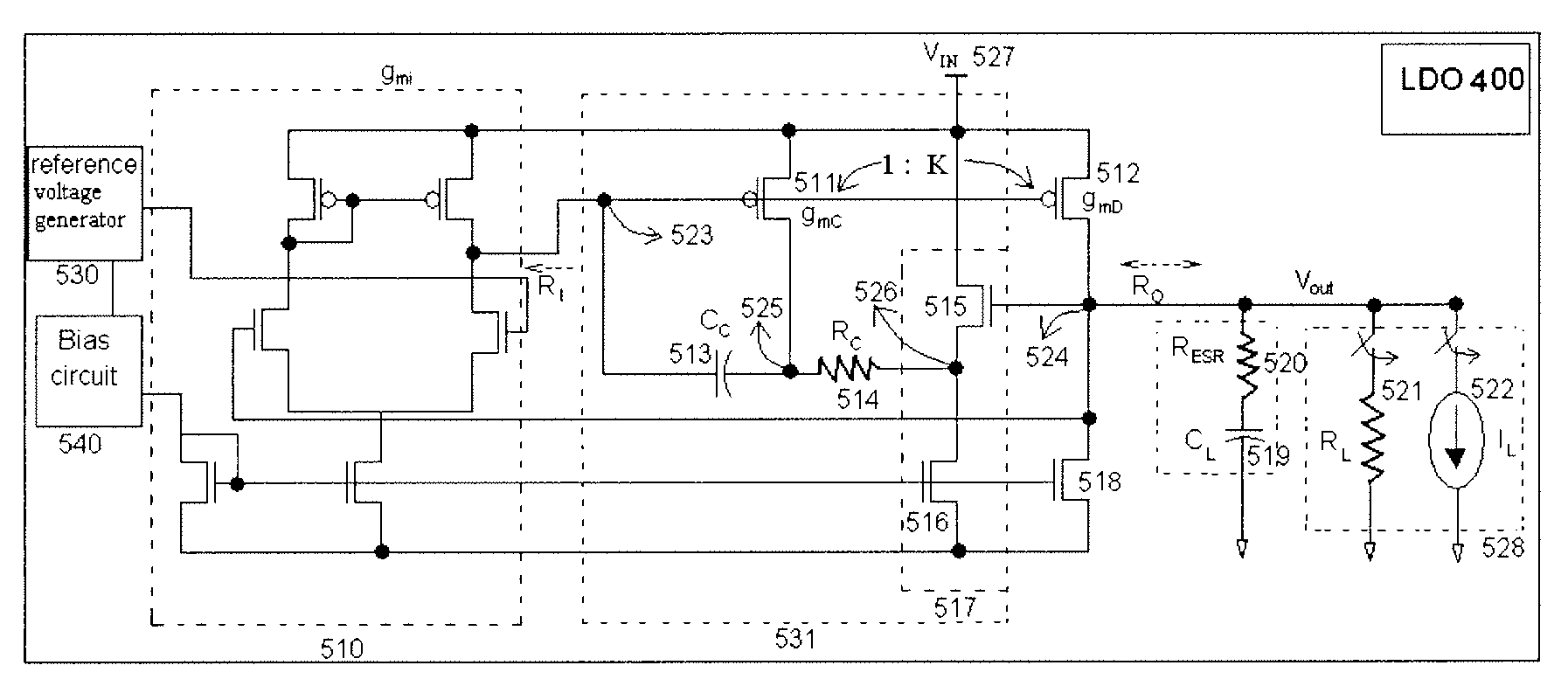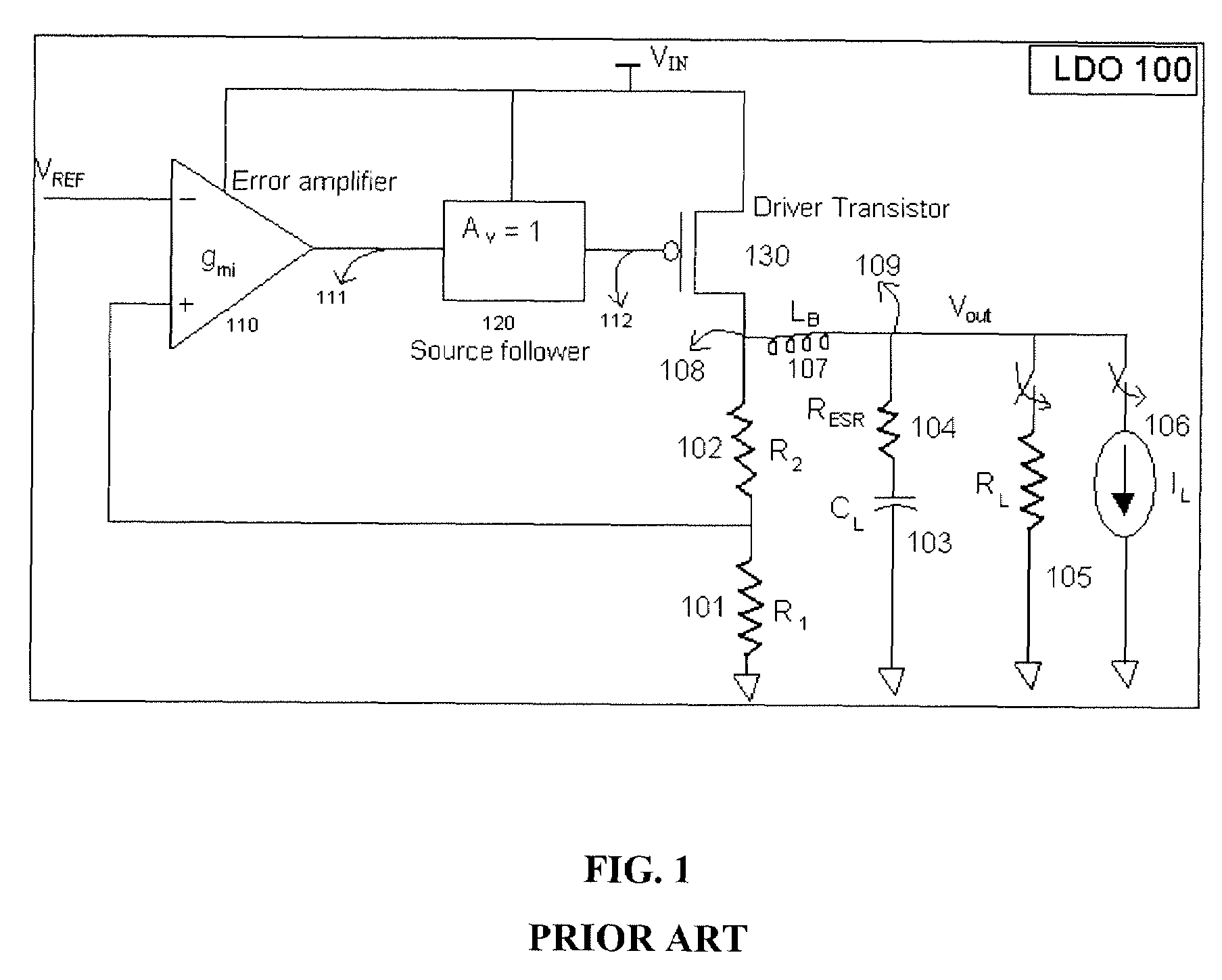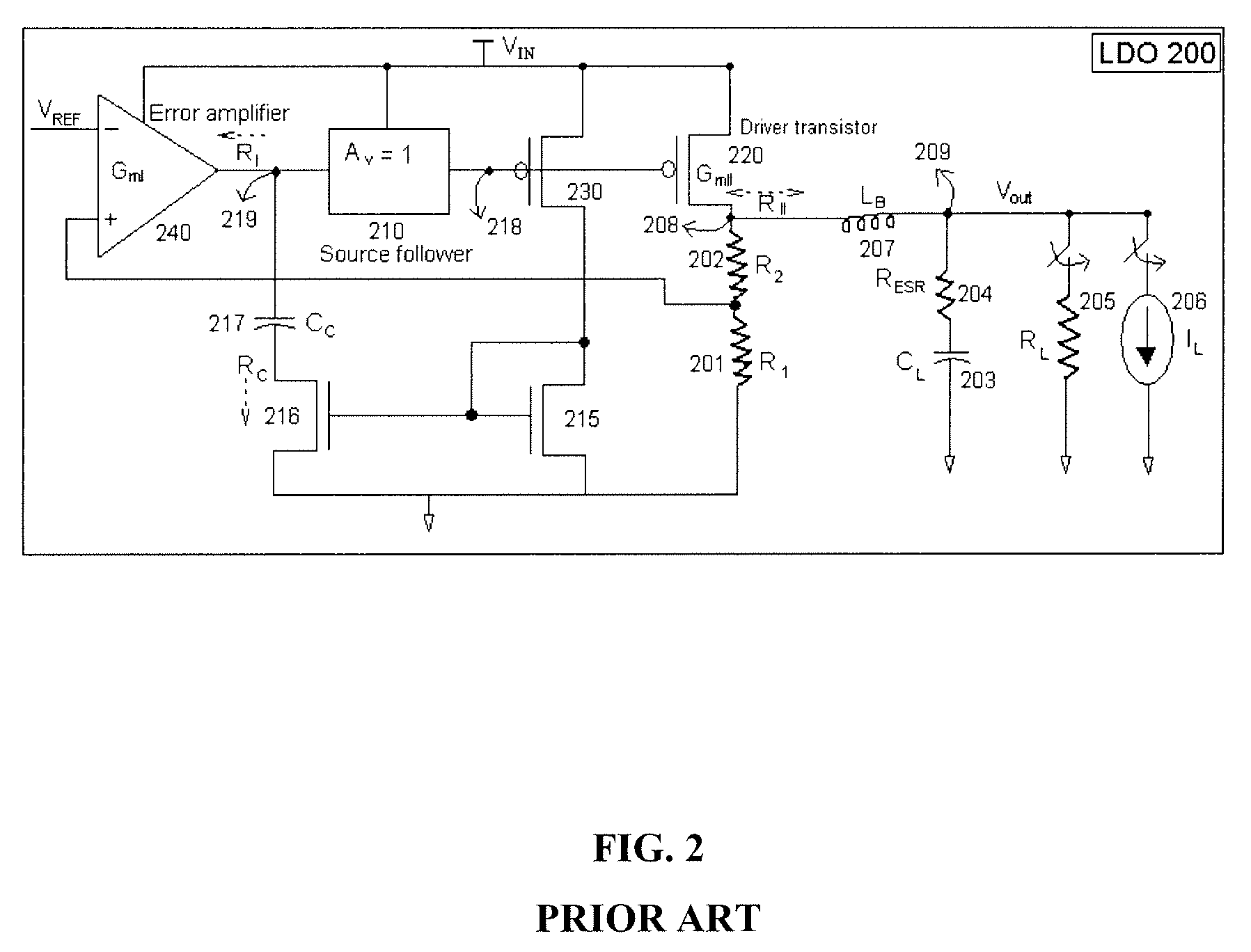Low dropout regulator with stability compensation
a low-dropout regulator and stability compensation technology, applied in the direction of electric variable regulation, process and machine control, instruments, etc., can solve the problems of transient response oscillation in nature, the compensation strategy adopted in prior art 1 no longer holds good for the low-load-capacitor regulator suitable for soc applications, and the stability problem in actual scenarios. to achieve good phase margin
- Summary
- Abstract
- Description
- Claims
- Application Information
AI Technical Summary
Benefits of technology
Problems solved by technology
Method used
Image
Examples
Embodiment Construction
[0094]The present invention provides a stability compensation circuit for an LDO driving a load capacitor in a range of few nano-Farads to few hundreds of nano-Farads with a good phase margin over a no load to full load current range, and maintains minimum power area product for an LDO suitable for a SoC integration.
[0095]FIG. 4 describes a block diagram of an LDO 400 according to an embodiment of the present invention.
[0096]FIG. 5 shows a schematic diagram of an LDO (400) according to an embodiment of the present invention. The present LDO (400) can be considered as a two stage amplifier. The first stage 510, which is a differential to single ended differential amplifier, compares a reference voltage generated from a reference voltage generator circuit 530 with a regulated output voltage at node 524 of the LDO 400. The reference voltage and the regulated output voltage are connected to a negative and a positive terminal of an error amplifier 510 with respect to the output (node 523...
PUM
 Login to View More
Login to View More Abstract
Description
Claims
Application Information
 Login to View More
Login to View More - R&D
- Intellectual Property
- Life Sciences
- Materials
- Tech Scout
- Unparalleled Data Quality
- Higher Quality Content
- 60% Fewer Hallucinations
Browse by: Latest US Patents, China's latest patents, Technical Efficacy Thesaurus, Application Domain, Technology Topic, Popular Technical Reports.
© 2025 PatSnap. All rights reserved.Legal|Privacy policy|Modern Slavery Act Transparency Statement|Sitemap|About US| Contact US: help@patsnap.com



